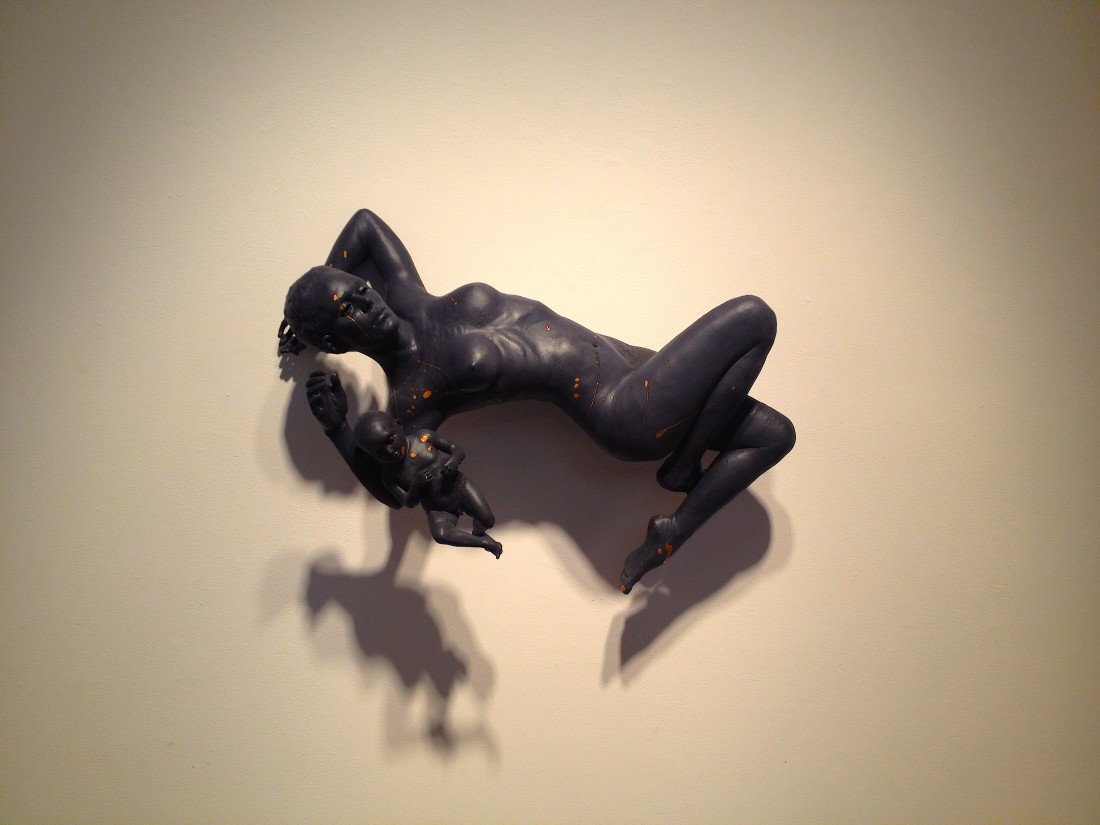This is the final week of viewing for a small self-titled exhib by Penland-based ceramicist and sculptor Cristina Córdova. The show, on view through Saturday, Sept. 27, at Blue Spiral 1, marks the artist’s first exhibition in downtown Asheville in nearly eight years.
Córdova’s work occupies only three small walls in the back of the gallery’s main floor. But despite its seemingly minimal presence tucked behind the dozens of glass, ceramic and metal works from Blue Spiral’s principal summer exhibition, Ahead of the Curve, Córdova’s collection has an undeniable allure.
Seven ceramic figures hang in suspended balance in the artist’s own supernatural dystopia. They’re mystics and martyrs, somber gold-slicked priests and priestesses of some unknown ideology and landscape. Each seems to have experienced a lifetime of hard work or suffering. These figures seemed lived-in, textured by grief and contemplation.
A series of four small busts lining one wall, each no taller than 8 or 9 inches, lament over matters unseen. They have cold, deadpan stares and stiff upper lips. Their seriousness, though, is broken by the abstract and festive red, white and blue patterning that appears on each piece. The artist has placed this coloration on two hats — one modern, one seemingly ancient — and on the inside of a reversed face mask identical to the figure depicted in “Mito del Origen.” Each offers a lighter, alternative view into the otherwise resigned persona.
In “Imperio,” a free-standing floor piece, a battered torso sits atop a minimalistic steel pedestal. This hulk may well be a corpse as it’s riddled with dozens of gold-lined bullet holes. One arm has been hacked away, revealing a similarly gold-lined radius and ulna. Thick glazing drips down from an open head wound and hollow eyes. It flows down the expanded, cracked and scarred white clay chest in waves, as if the figure is waterlogged. Despite the shear girth of this otherwise strong character, that soggy appearance renders him fragile.
Córdova swaps out the lumpy, porcelainlike skin and dystopic suffering for ashen matte blackness and a subtle magical realism in her two final pieces, “Que Mamen!” and “Colonia.” Each takes on the form and posture of a Madonna, though they border on the mystical — even sinful — rather than the religious. “Que Mamen!” depicts a could-be virgin and child. However, the artist has abandoned the traditional seated, cradling position. Instead, the two figures are frozen in a free fall, with mother and child looking way from each other.
“Colonia,” a childless Madonna, is perched with a swooning hip atop a gold leaf-covered stone. Beneath her, four other stonelike forms trail off toward the floor. She’s bordered by a thin, angular steel wire that forms a cloud silhouette above her head before wrapping around her. One arm is tucked by her side, the other is lackadaisically tilted upward in a way that all but says “come hither.”
For more information, visit bluespiral1.com




Before you comment
The comments section is here to provide a platform for civil dialogue on the issues we face together as a local community. Xpress is committed to offering this platform for all voices, but when the tone of the discussion gets nasty or strays off topic, we believe many people choose not to participate. Xpress editors are determined to moderate comments to ensure a constructive interchange is maintained. All comments judged not to be in keeping with the spirit of civil discourse will be removed and repeat violators will be banned. See here for our terms of service. Thank you for being part of this effort to promote respectful discussion.